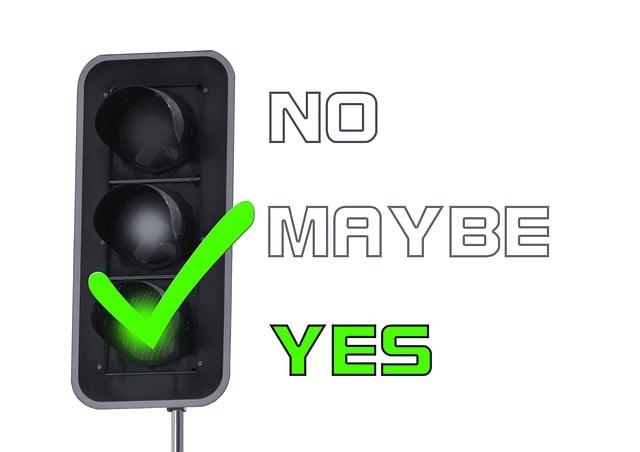When selling a car, choose between fast cash and traditional trade-ins. Maintain its condition for better resale value. Gather documents and know your car's specs for accurate valuation. Research online to compare prices and demand. Complete paperwork transparently for smooth sales. Trade-in offers financial relief, expands car-buying options.
Looking to sell your vehicle but unsure where to start? This comprehensive guide simplifies the trade-in process, ensuring a smooth and rewarding experience. From understanding your options—whether to sell or exchange—to preparing your car for appraisal, we cover every step. Learn how to gather essential documents and what to expect during value assessment. Discover post-trade-in benefits and next steps, as well as expert tips for getting the best deal when Select Selling a Vehicle.
- Choose a Trade-In Option: Sell or Exchange?
- Prepare Your Vehicle for Appraisal
- Gather Necessary Documents and Details
- Get an Accurate Trade-In Value Assessment
- Finalize the Trade-In Deal and Handover
- Explore Post-Trade-In Benefits and Next Steps
Choose a Trade-In Option: Sell or Exchange?

When considering a trade-in process, the first step is to choose between selling or exchanging your vehicle. Select selling a vehicle as an option if you’re looking for a quick and straightforward method to get cash in hand. This route is particularly appealing for those who want to bypass the back-and-forth negotiations often associated with trading in directly to a dealership.
If you have a classic car or a vehicle with unique features, you might prefer an exchange. This allows you to potentially find a new owner who appreciates your vehicle’s specific characteristics. However, it’s crucial to understand the how to price my car for sale process carefully, especially when dealing directly with private sellers, who may offer different advantages compared to dealerships, such as higher prices based on market demand and flexibility in terms of sale conditions.
Prepare Your Vehicle for Appraisal

When preparing your vehicle for appraisal during the trade-in process, ensure it’s clean and well-maintained. A spotless exterior and interior can significantly impact the overall value of your car. Consider taking the time to wash and wax the vehicle, vacuum the floors, and clean the windows inside and out. These simple steps not only make your car look its best but also demonstrate your care and attention to detail, which can be appealing to potential buyers or trading-in centers.
Additionally, if you’re selling a classic car or trading in an old car, remember that first impressions matter. Make any necessary repairs, replace worn-out parts, and consider adding some minor enhancements to give your vehicle a fresh feel. A well-presented car can lead to a smoother transaction when selecting a selling a vehicle option, whether it’s for fast cash for cars or a traditional trade-in.
Gather Necessary Documents and Details

When considering Select Selling a Vehicle through an auto trading platforms comparison, the first step involves gathering all necessary documents and details for a smooth transaction. This process ensures both parties have accurate information, streamlining the whole sale. Gather important paperwork such as the vehicle’s registration and title, which are crucial for transferring ownership. Additionally, having recent maintenance records and any service history can enhance the selling point of your car on the car resale market overview.
For a successful trade-in, know the specifications and details of your vehicle—make, model, year, mileage, and condition. These factors play a significant role in determining the value of your car when negotiating with dealers or even when dealing as a private seller. Understanding the current private seller advantages can also empower you to make informed decisions regarding the best course of action for selling your vehicle.
Get an Accurate Trade-In Value Assessment

When considering selling a vehicle, getting an accurate trade-in value assessment is the first step to ensure you’re offered fair compensation. This process involves researching various car selling platforms and comparing prices. Start by checking reputable online resources that specialize in vehicle valuations, which often take into account your car’s make, model, year, mileage, and condition. These tools provide an initial estimate, giving you a baseline for negotiation.
Additionally, exploring the reselling private property market can offer insights into current demand and prices. Many websites and apps allow users to list their vehicles for sale, providing an opportunity to see active offers and sold listings. By cross-referencing these sources, you’ll gain a clearer understanding of your car’s worth in today’s market, empowering you with the knowledge to make informed decisions when how to trade in a vehicle.
Finalize the Trade-In Deal and Handover

After agreeing on a fair trade-in value, it’s time to finalize the deal and hand over your vehicle. This step involves ensuring all necessary paperwork is completed and signed by both parties. It’s crucial to have a clear understanding of any associated costs or fees, such as those charged by used car brokers, which can vary depending on the platform or individual buyer.
The process should be straightforward if you’re selling directly to an authorized dealer. They will provide you with a trade-in appraisal and a written offer. If using a third-party service or private buyer, follow a step-by-step guide for selling a car that includes verifying their legitimacy, understanding any hidden costs, and arranging a safe handover location. Remember, the best time to sell a vehicle is when your car is in good condition and you have a reasonable understanding of its market value, which can be influenced by factors like seasonality and demand.
Explore Post-Trade-In Benefits and Next Steps

After successfully trading in your vehicle through a simple process, there are several benefits to explore and next steps to consider. One of the immediate advantages is financial relief; trading in your old car can significantly reduce your financial burden, especially if you’re looking to upgrade or need to make way for a new purchase. This cash injection can be used for various purposes, such as making substantial payments towards a new car’s lease or loan, investing in home improvements, or even saving for the future.
Additionally, the post-trade-in experience opens doors to a wide range of options. You might choose to explore different auto trading platforms comparison to find the best deal on your next vehicle. Visiting second-hand car trading posts can also offer exciting opportunities, allowing you to discover a diverse array of second-hand cars at competitive prices. This flexibility and access to financial gains make the trade-in process a strategic step towards your next automotive adventure.
Selling or exchanging your vehicle has never been easier with today’s streamlined trade-in process. By carefully considering your options, preparing your car, gathering essential documents, and understanding your assessment, you can secure a fair deal. After finalizing the trade-in, enjoy the benefits of a new beginning, whether it’s using your remaining value towards a new purchase or exploring other post-trade-in opportunities. For those looking to select selling a vehicle, this simplified approach makes it an attractive and efficient choice.
